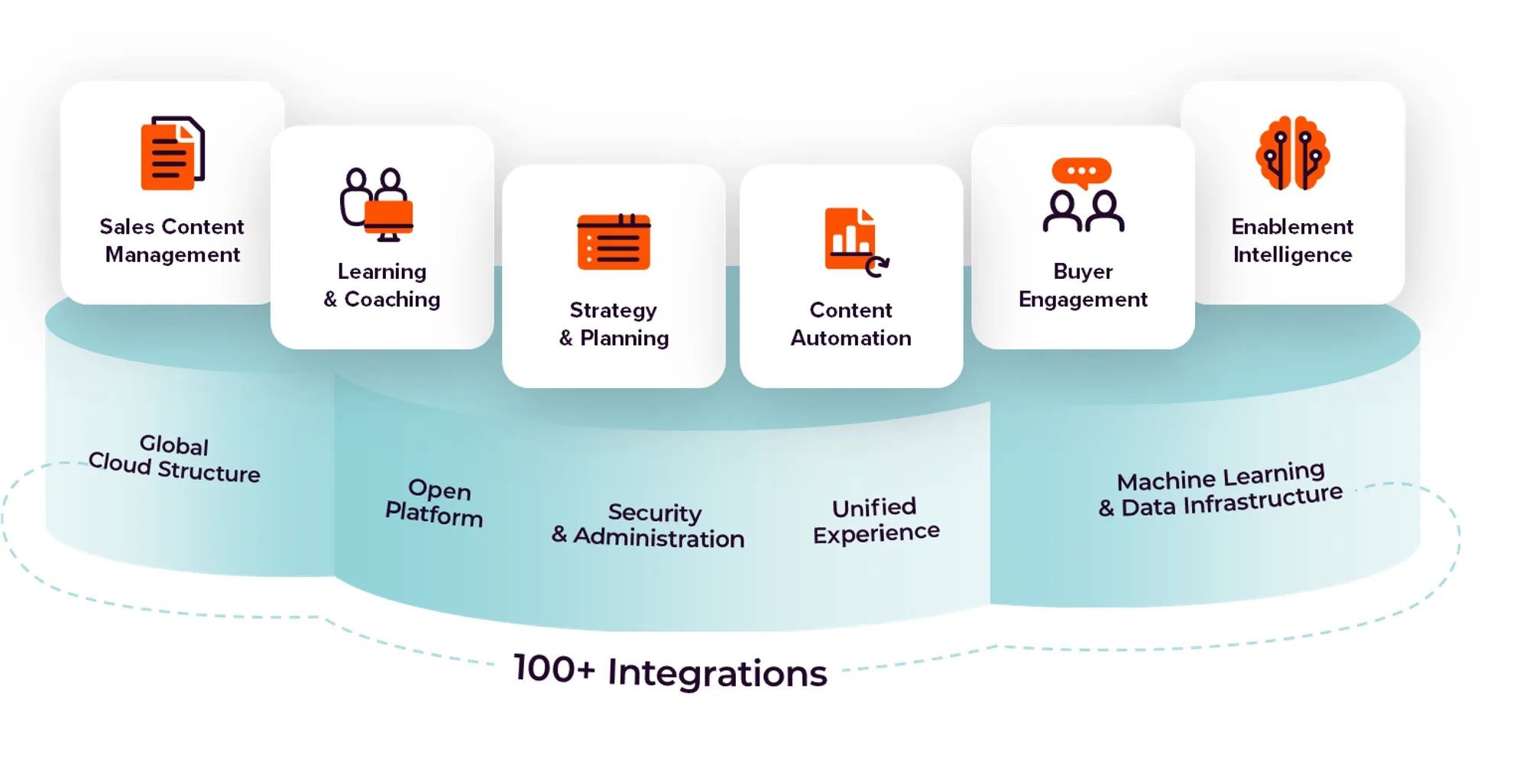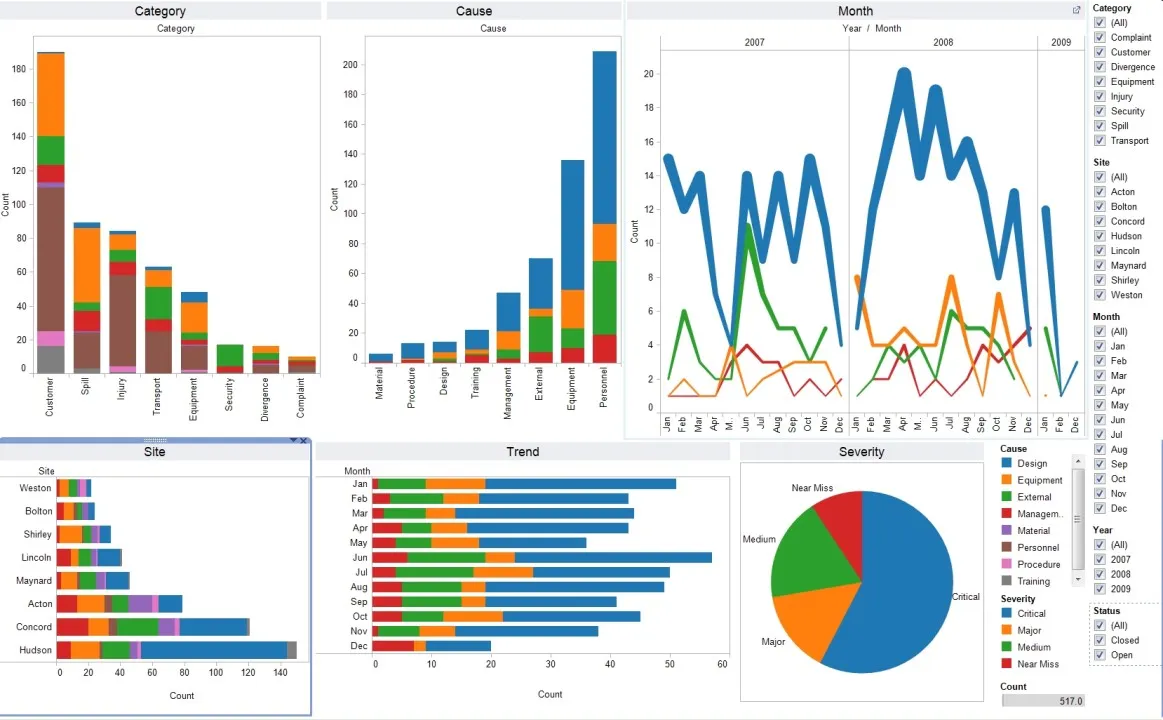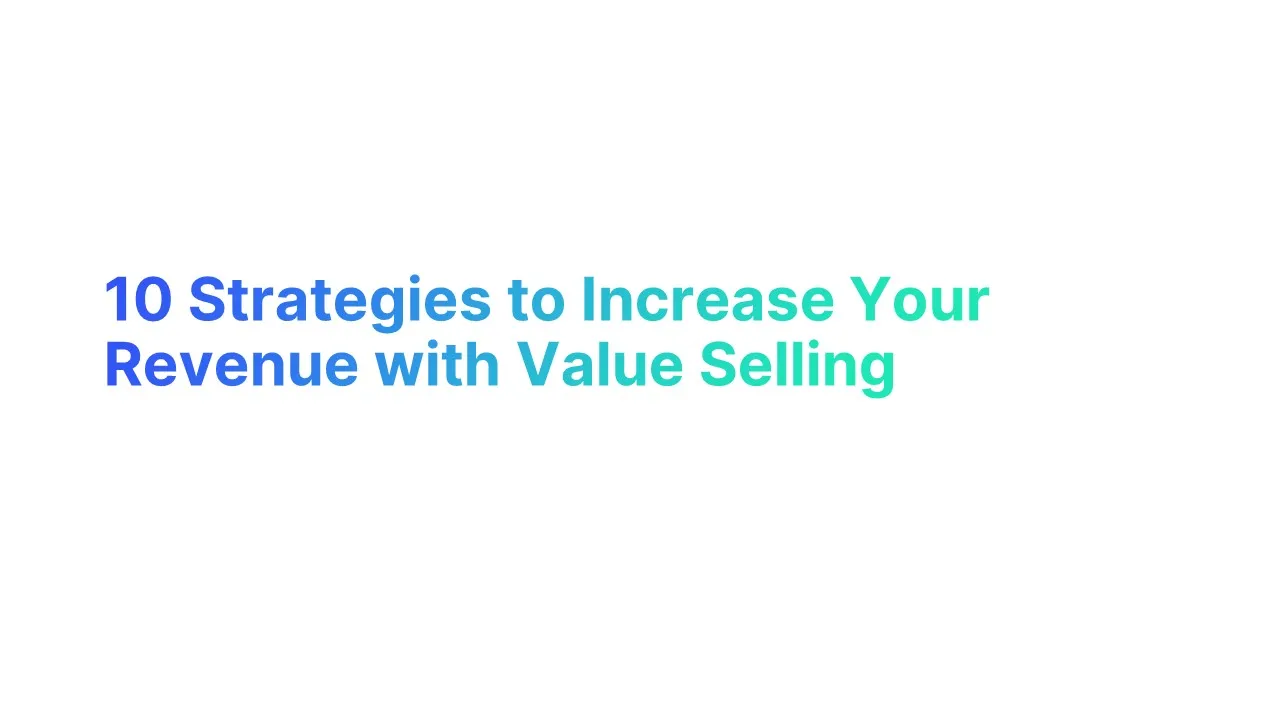Introduction to Value Selling

What is Value Selling?
Value selling is a sales technique that focuses on highlighting the unique benefits of a product or service, demonstrating how these benefits address the specific needs and challenges of the customer.
Rather than just competing on price, value selling emphasizes creating more value for the customer, which can justify a higher price point because of the significant advantages it offers.
This approach shifts the conversation from cost to value, aligning the product's strengths with the customer's objectives and priorities.
Key Principles of Value-Based Selling Approach
1. Customer-Centric Approach
- Value-based selling starts with a deep understanding of the customer’s business, including their industry, challenges, and strategic goals. It involves listening to the customer to genuinely understand their needs and tailor solutions accordingly.
- According to a Salesforce report, 66% of customers expect companies to understand their needs and expectations. When businesses align their offerings with these expectations, they are more likely to build lasting relationships.
2. Articulation of Value
- Communicate the benefits of your products or services in terms that matter most to your customers. This includes explaining how your offering can solve problems or enhance the customer’s business operations.
- For example, a CRM system might be presented not just as a tool for organizing contacts, but as a way to increase lead conversion rates by 30%, directly impacting the client’s revenue.
3. Evidence-Based Selling
- Use data and case studies to substantiate the value proposition. Real-world examples and testimonials can significantly bolster your claims, making the proposed solutions more credible.
- A study by the Marketing Leadership Council found that customer testimonials and case studies are among the most effective content types during the sales process, influencing over 70% of purchasing decisions.
4. Consultative Engagement
- Engage with the customer as a consultant rather than just a seller. This involves ongoing dialogue to refine understanding and adjust solutions as the customer’s needs evolve.
- A consultative approach not only increases the chance of initial sales but fosters longer-term engagement, which can lead to a 20-40% increase in customer loyalty, according to Bain & Company.
5. Quantifiable ROI
- Clearly demonstrate the return on investment of your solutions with specific, quantifiable metrics. This helps in justifying the cost of your product and assures the customer of its value.
- For instance, demonstrating that a new software can reduce operational costs by 15% annually can provide a clear, compelling reason for its adoption.
6. Tailored Solutions
- Avoid one-size-fits-all solutions. Customize your offerings to address the unique challenges and goals of each customer, which can enhance perceived value and satisfaction.
- Customized solutions have been shown to increase customer satisfaction by up to 50%, and they can significantly impact the perceived value of your offering.
The Importance of Value Based Selling in Modern Sales Processes

Strategic shift is essential in today's market where customers demand more than just products; they seek solutions that directly impact their business outcomes positively.
1. Impact on Sales Effectiveness
Value-based selling involves understanding and aligning with the customer's business objectives and pain points, leading to deeper engagement. According to a study by RAIN Group, sales professionals who excel at customer needs diagnosis are 2.8 times more likely to achieve high sales performance.
By demonstrating how products or services can solve specific problems or add significant value, sales teams can increase the likelihood of closing deals. For instance, a value-based approach can boost conversion rates by up to 70% when compared to traditional selling methods.
2. Benefits to Customer Relationships
Offering solutions that align with the customer’s strategic goals fosters trust, establishing the sales team as a valued partner rather than just a vendor. Trust is a critical factor in purchasing decisions, with 83% of customers citing it as a deciding factor in their buying choices, according to Salesforce research.
When customers see tangible benefits from their investments, they are more likely to return for additional products or services.
A value-based approach ensures ongoing satisfaction, which can increase customer retention rates significantly. Data shows that improving customer retention by just 5% can boost profits by 25% to 95%.
3. Driving Competitive Advantage
Value-based selling helps companies stand out by highlighting how their solutions are uniquely positioned to address the specific challenges of their customers. This differentiation is crucial in industries where many products appear similar on the surface.
By focusing on value rather than price, companies can justify premium pricing models. Customers are willing to pay more if they perceive that the product will deliver exceptional value.
4. Implementation for Long-Term Success
Effective value-based selling requires a sales force skilled in consultative selling techniques, capable of articulating the value and ROI of their solutions. Investing in regular training and development programs can equip sales reps with the necessary skills to succeed in a value-based selling environment.
Marketing efforts should support the value-based selling approach by generating insightful content that resonates with the target audience, highlighting customer success stories, and articulating clear value propositions.
How to Build and Implement a Value Selling Framework

Implementing a value selling methodology is crucial for aligning your sales strategy with the specific needs of your customers, ensuring that the unique benefits of your products or services clearly address their pain points.
Here’s a step-by-step guide on how to create and execute this framework effectively.
Step 1: Define Your Value Proposition
Begin by clearly defining the unique value your product or service offers, which is the cornerstone of your value selling methodology.
- Identify Key Benefits: List the primary benefits of your product, such as increased efficiency or cost savings.
- Gather Data: Support these benefits with concrete data, e.g., "Customers report a 30% increase in efficiency within three months."
- Consult Stakeholders: Include insights from stakeholders across sales, marketing, and product development to ensure a rounded value proposition.
Step 2: Target Customer Segmentation
Understanding who your customers are and what they value is crucial for effective value selling. Segmenting your market allows you to tailor your approach for different groups.
- Demographic and Psychographic Segmentation: Classify customers based on industry, company size, role, challenges, and priorities.
- Analyze Needs: For each segment, determine specific needs and how your product meets these needs, aligning with the value based sales approach.
- Customize Messages: Develop tailored messages that resonate with each segment, using data such as, "Our solution reduces downtime by up to 40%."
Step 3: Develop Sales Enablement Tools
Equip your sales rep team with the tools they need to effectively communicate the value proposition.
- Create Case Studies and Testimonials: Use real-life examples that showcase how your product has helped similar customers.
- Develop Training Materials: Provide training that includes role-playing to practice sales pitch delivery and handling objections.
- Utilize Data Sheets and Whitepapers: These should include technical specifications and industry benchmarks.
Step 4: Implement the Framework
Carefully roll out the value selling process to allow for feedback and adjustments.
- Pilot Program: Start with a pilot program to test the framework with a select group of sales representatives and key customers.
- Gather Feedback: Collect feedback from both sales teams and customers to refine the buying process and sales methodology.
- Iterate and Optimize: Adjust the framework based on feedback, focusing on areas like the sales cycle and specific feature benefits.
Step 5: Measure and Scale
Measure the success of the value selling approach and scale it across your organization.
- Define Key Performance Indicators (KPIs): Set KPIs such as conversion rates, average deal size, or customer satisfaction scores.
- Regular Reporting: Establish a system to track these KPIs, and share successes and insights across the team.
- Continuous Improvement: Promote ongoing improvement, using new insights and data to enhance the framework.
10 Value Based Selling Strategies for Sales Reps

These strategies will help you to emphasize the intrinsic value of your offerings, ensuring that your engagements with customers are both impactful and effective.
1. Highlight Unique Differentiators
Focus on what sets your product or service apart from the competition. This strategy involves identifying and promoting unique features that directly address customer pain points.
How to Implement
Conduct a competitive analysis to understand your unique selling propositions (USPs) and develop clear messaging around these differentiators.
When customers understand what makes your offering unique, they are more likely to perceive its value as higher than that of competitors. For example, if your software offers an exclusive feature that saves time, quantify that time savings in terms of cost to showcase tangible benefits.
2. Align Solutions with Strategic Business Objectives
Make your product or service indispensable by aligning it with the strategic goals of the customer's business.
How to Implement
During discovery meetings, ask targeted questions to uncover not just surface-level needs but deeper strategic goals. Tailor your pitch to explain how your solution can help achieve these objectives.
When customers see that your solution can directly impact their business goals, such as increasing market share or reducing operational costs, the perceived value of your offering increases. Present data and case studies that show how you've helped similar customers achieve their strategic objectives.
3. Optimize Pricing Strategies Based on Perceived Value
Adjust your pricing models based on the perceived value your solution provides rather than solely on the cost to deliver it.
How to Implement
Use tiered pricing structures that allow customers to choose how much they pay based on the value they expect to receive. Each tier should clearly articulate the additional value provided at higher price points.
Customers are often willing to pay more for higher levels of service or functionality that they perceive as valuable. For example, offering premium support services or enhanced features at higher tiers can justify a higher price point.
4. Educate Your Customers
Use education as a tool to enhance the perceived value of your products or services. Educating your customers about the benefits and applications of your offering can significantly increase its value perception.
How to Implement
Develop resources such as webinars, workshops, and detailed guides that help customers understand and utilize your product effectively.
Education not only helps customers get the most out of your product but also builds trust and loyalty. Demonstrating how your product can be used to solve various problems or achieve different results can expand its perceived utility and value.
5. Implement a Value Recap Strategy
Regularly remind customers of the value they have received from your product or service. This strategy involves communicating the ongoing benefits and successes that come from their investment.
How to Implement
Schedule regular review meetings with customers to discuss the results and benefits they have experienced. Prepare reports that quantify these benefits in meaningful ways.
Regularly reinforcing the value provided helps justify the customer's decision to purchase and can lead to renewals and upsells. For instance, showing a customer that they have achieved a 20% increase in efficiency since implementing your solution reinforces the value of the investment and encourages continued business.
6. Leverage Social Proof and Testimonials
Utilize the power of social proof to demonstrate the value and effectiveness of your products or services through the experiences of other customers.
How to Implement
Collect and display testimonials, case studies, and reviews that showcase positive outcomes and satisfied customers. Choose examples that are relatable to your target audience and highlight specific benefits.
Social proof can significantly influence decision-making by validating your offering’s value through real-world applications. For instance, presenting a case study where a similar company achieved a 30% increase in productivity can be a powerful motivator for new customers.
7. Develop Comprehensive Value Assessments
Create detailed assessments that help potential customers understand the full scope of value your solution can provide.
How to Implement
Offer a value assessment service as part of the sales process where you analyze a prospect’s current challenges and demonstrate how your solution can address them with specific, quantifiable outcomes.
A value assessment can personalize the sales experience and make the benefits of your product tangible. By showing potential ROI and other key metrics, you help the customer visualize the impact of their investment.
8. Enhance Customer Experience
Deliver exceptional customer service and support to reinforce the value proposition of your offerings throughout the customer journey.
How to Implement
Invest in training your customer service team to not only solve issues but also proactively offer solutions and additional benefits. Ensure that every interaction adds value to the customer experience.
A positive customer experience can enhance perceived value and is often a decisive factor in purchase decisions and loyalty. Companies that excel in customer experience outperform competitors by nearly 80%.
9. Value-Based Content Marketing
Use content marketing to educate potential customers about the industry-specific benefits of your solutions.
How to Implement
Create content such as blogs, white papers, and videos that address common industry problems and how your solutions solve them. Tailor content to different stages of the buyer’s journey to ensure relevance.
Effective content marketing can help build brand authority and trust, making it easier for sales teams to engage with informed prospects. It provides ongoing value by educating and guiding potential customers towards a purchase.
10. Strategic Follow-Up
Implement a structured follow-up strategy that reinforces the value proposition and addresses any evolving needs or concerns post-purchase.
How to Implement
Establish a timeline for follow-up communications that include checking in on the product's performance, offering tips for better usage, and informing customers about new updates or features.
Consistent follow-ups keep the communication lines open and can prompt additional sales opportunities. They remind customers of the ongoing support and dedication to their success, reinforcing the initial value proposition and enhancing customer retention.
Value-Based Selling Examples

Value-based selling focuses on the benefits that a product or service provides to a customer, emphasizing the value these benefits bring to the customer's business or personal life, rather than just the features or technical specifications. Here are several examples that illustrate how value-based selling can be effectively implemented across different industries:
1. Software Solutions
Scenario: A company sells customer relationship management (CRM) software.
Value-Based Selling Approach: Instead of simply listing the features of the CRM, the sales rep explains how it can enhance the customer's sales process by automating follow-ups, tracking sales activities, and providing actionable insights. The rep demonstrates that by using the CRM, previous clients have seen a 25% increase in sales productivity and a 30% reduction in time spent on manual data entry.
2. Healthcare Equipment
Scenario: A medical device company sells advanced imaging equipment.
Value-Based Selling Approach: The salesperson focuses on how the imaging equipment can speed up diagnosis times and improve diagnostic accuracy, thereby enhancing patient outcomes. They provide data showing that clinics using their equipment have seen a 40% improvement in patient diagnosis speed and a significant decrease in misdiagnoses.
3. Consulting Services
Scenario: A consultancy offers change management services.
Value-Based Selling Approach: The consultant outlines how their services can help the client company navigate through major transitions smoothly, maintaining or even increasing productivity during the change. They cite examples of past clients whose employee satisfaction and retention rates improved due to their structured approach to change management.
4. Automotive Sales
Scenario: A car dealership sells electric vehicles (EVs).
Value-Based Selling Approach: Instead of focusing solely on the specifications of the EVs, the salesperson discusses the long-term savings on fuel and maintenance costs, the environmental benefits of switching to electric, and potential tax incentives. They may show comparisons of total ownership costs between EVs and traditional vehicles to highlight the financial benefits.
5. Real Estate
Scenario: A real estate agent sells commercial properties.
Value-Based Selling Approach: The agent emphasizes the strategic location of a property, showing potential buyers how this location can increase foot traffic, enhance visibility, and improve business operations. They provide demographic studies and traffic flow data to back up their claims, showcasing the potential for increased revenue.
6. Agricultural Products
Scenario: A company sells high-yield seed varieties to farmers.
Value-Based Selling Approach: The sales representative explains how these seeds require less pesticide and yield more crop per acre than traditional seeds. They share results from other farms and possibly offer a cost-benefit analysis to demonstrate the potential increase in profit margins due to higher yields and lower input costs.
7. Technology Infrastructure
Scenario: A tech company provides cloud storage solutions.
Value-Based Selling Approach: The sales rep focuses on the security, scalability, and cost-effectiveness of their cloud solutions. They highlight how these features can protect critical data and allow the business to adjust storage needs on-the-fly, potentially reducing IT overhead costs significantly.
6 Best Tools to Use for Value Selling for Sales Professionals
For sales professionals committed to implementing a value-based selling approach, having the right tools can dramatically increase efficiency and effectiveness.
Here are some of the best tools currently available that can support sales teams in demonstrating and delivering value to their prospects and customers:
1. CRM Software - Salesforce

- Functionality: Salesforce offers a comprehensive CRM solution that allows sales professionals to track all customer interactions, manage sales pipelines, and analyze data to better understand customer needs.
- Value Selling Benefits: By using Salesforce, sales reps can personalize their interactions based on detailed customer history and preferences, enabling them to tailor their value propositions more effectively.
2. Sales Enablement - Seismic

- Functionality: Seismic is a leading sales enablement platform that provides tools for content management, personalized selling, and engagement tracking.
- Value Selling Benefits: It helps sales teams to deliver the right content at the right time, aligning marketing and sales efforts to ensure consistent messaging around the value provided to customers.
3. Presentation Software - Prezi

- Functionality: Prezi allows users to create dynamic and engaging presentations rather than static slides, with a focus on storytelling and visualization.
- Value Selling Benefits: Effective presentations using Prezi can help illustrate complex value propositions in a clear and compelling way, enhancing the customer's understanding and appreciation of the proposed solutions.
4. Proposal and Quote Management - PandaDoc

- Functionality: PandaDoc streamlines the process of creating, sending, and tracking business proposals and quotes.
- Value Selling Benefits: With customizable templates and automated workflows, PandaDoc enables sales reps to quickly produce detailed, accurate proposals that highlight the value of their offerings, thus speeding up the decision-making process.
5. Customer Feedback - Qualtrics

- Functionality: Qualtrics is an experience management platform that helps companies capture and analyze customer feedback.
- Value Selling Benefits: Understanding customer perceptions and experiences in real-time allows sales professionals to adjust their value propositions and improve their sales strategies based on direct customer insights.
6. Analytics and Data Visualization - Tableau

- Functionality: Tableau provides powerful data visualization tools that help make complex data more accessible and understandable.
- Value Selling Benefits: Sales teams can use Tableau to present data-driven insights and compelling visual arguments that support the value of their solutions, making it easier for customers to grasp the benefits and ROI.
Concluding Thoughts
In conclusion, value selling stands as a transformative approach in modern sales, shifting the focus from price to the deeper benefits that resonate with customers' specific needs and strategic goals. By understanding the fundamental principles of value-based selling, such as customer-centric strategies, articulation of value, and evidence-based selling, sales professionals can enhance their interactions and build stronger, more profitable relationships.
Moreover, the adoption of a structured value selling framework, backed by the right tools and continuous training, enables organizations to not only meet but exceed customer expectations, fostering loyalty and driving sustainable growth. This comprehensive strategy ensures that businesses remain competitive in a rapidly evolving market, where success is defined not just by the number of sales, but by the depth and durability of customer relationships.





.jpg)

.jpg)
